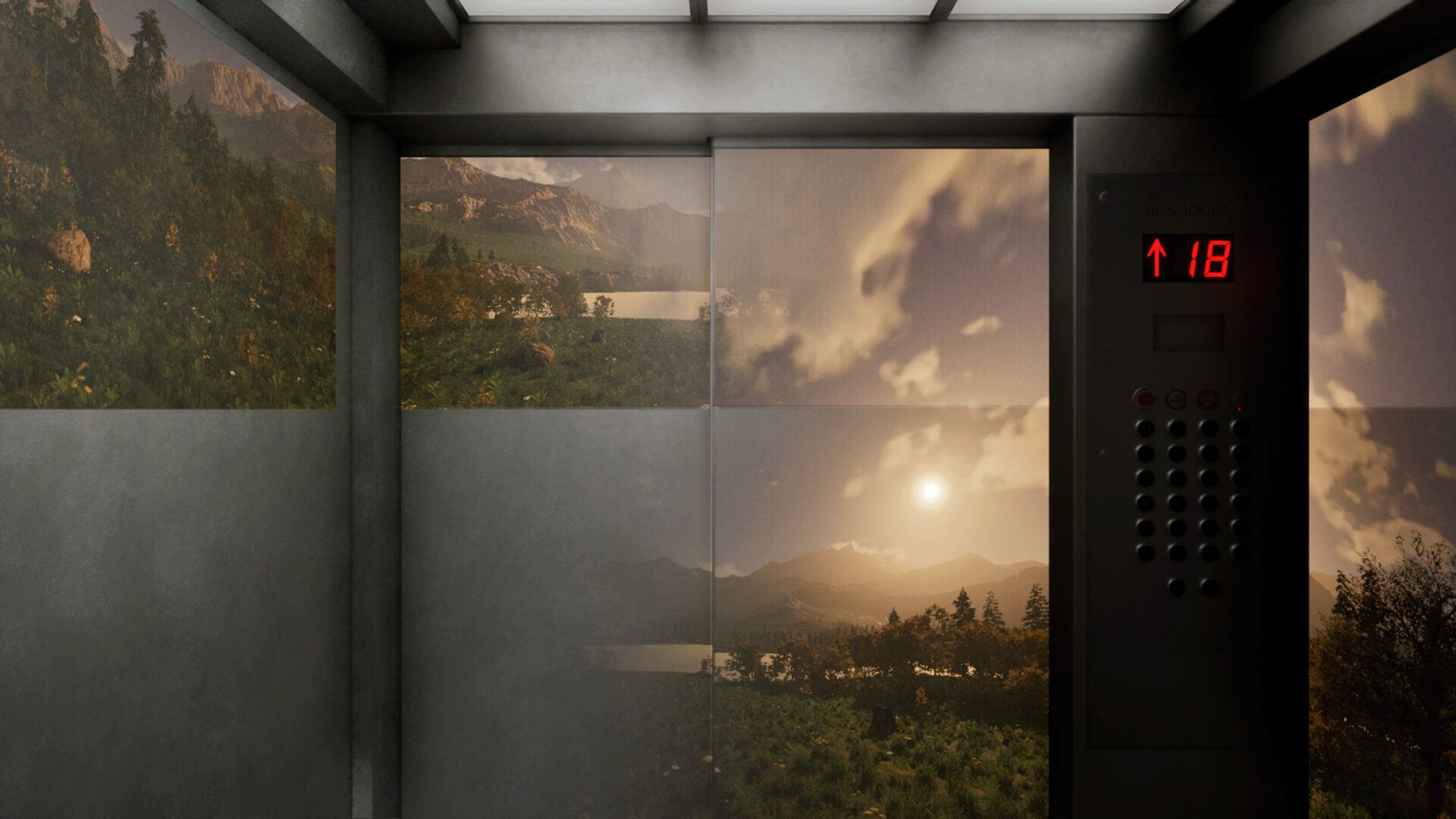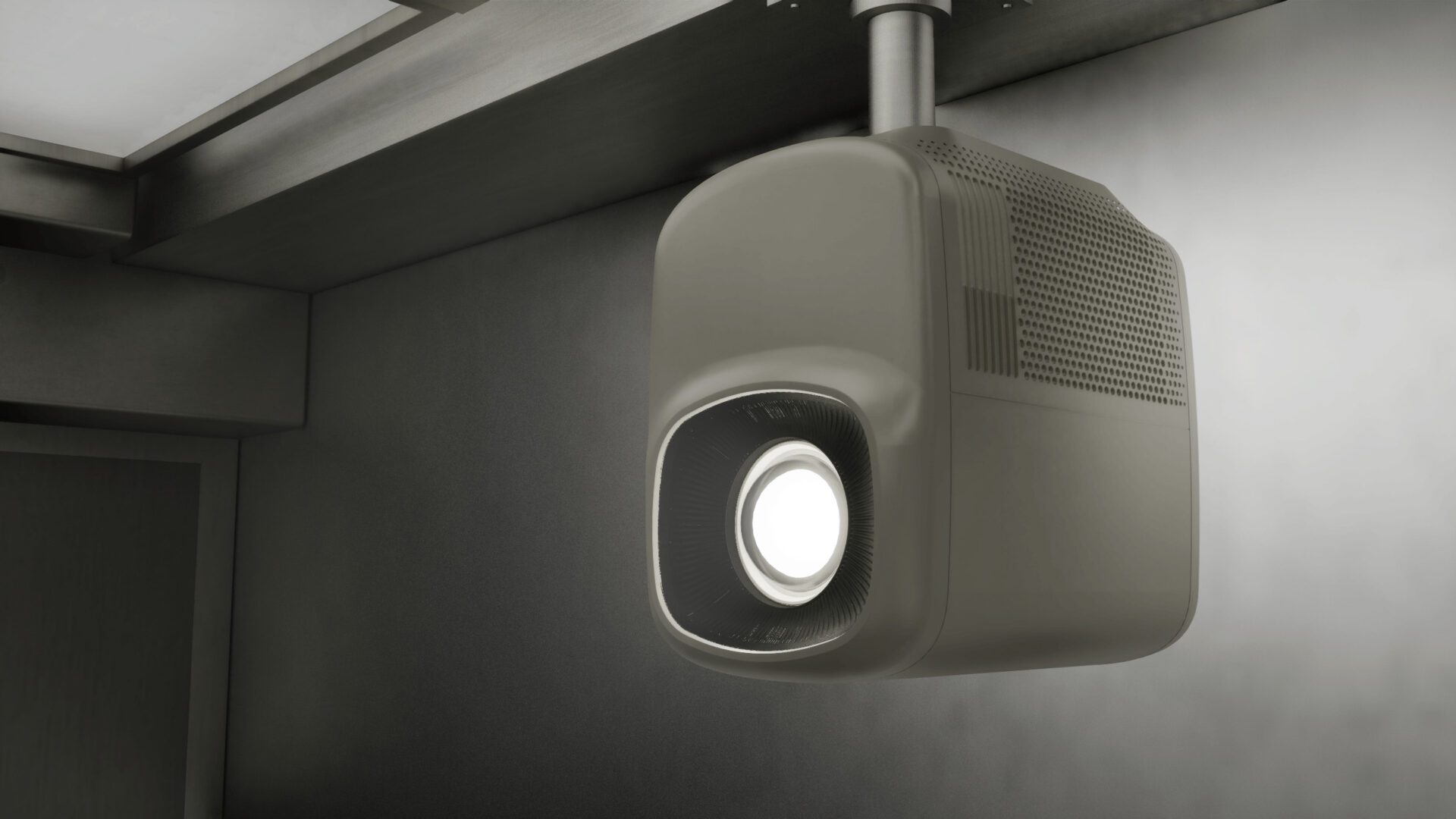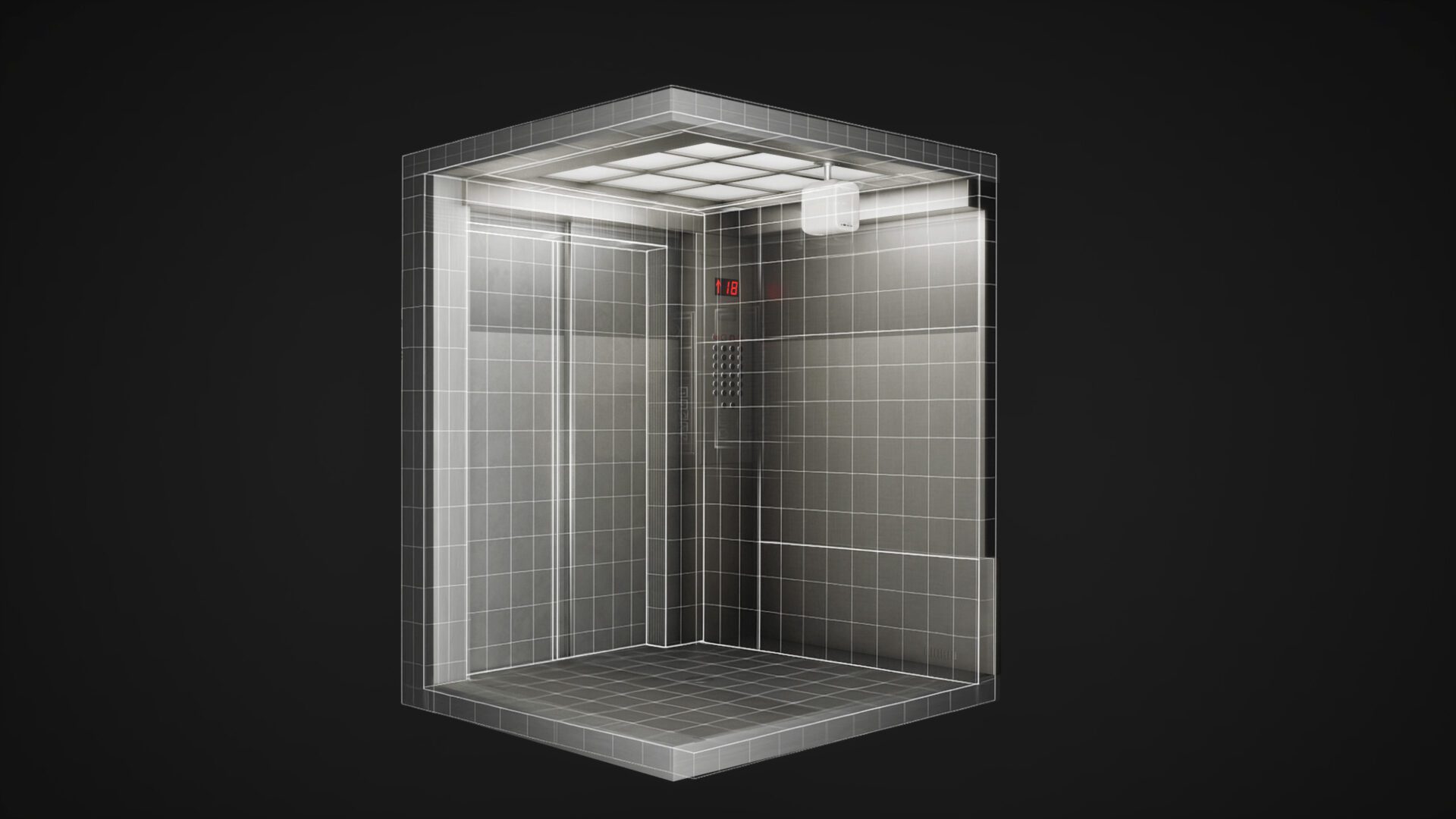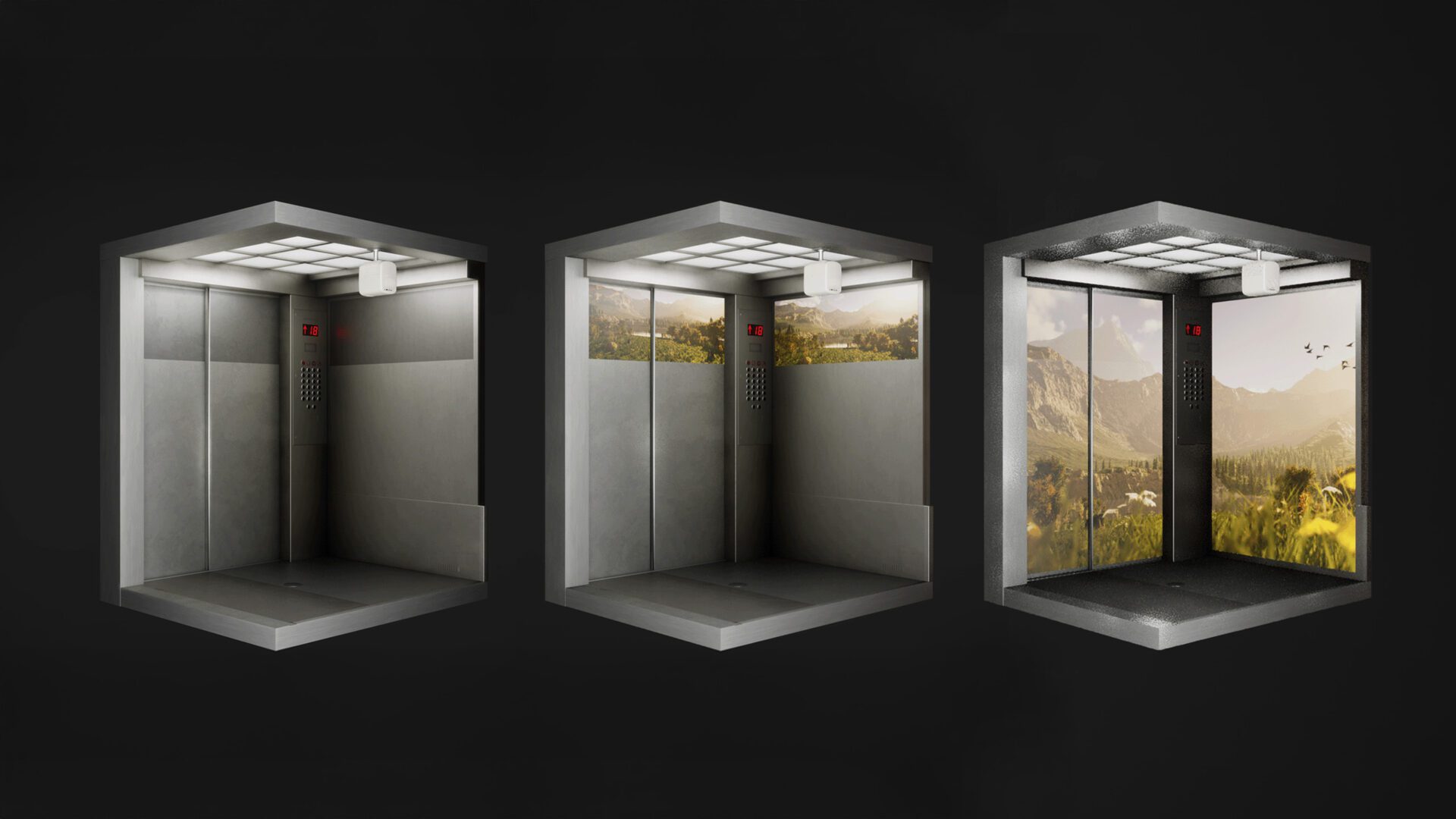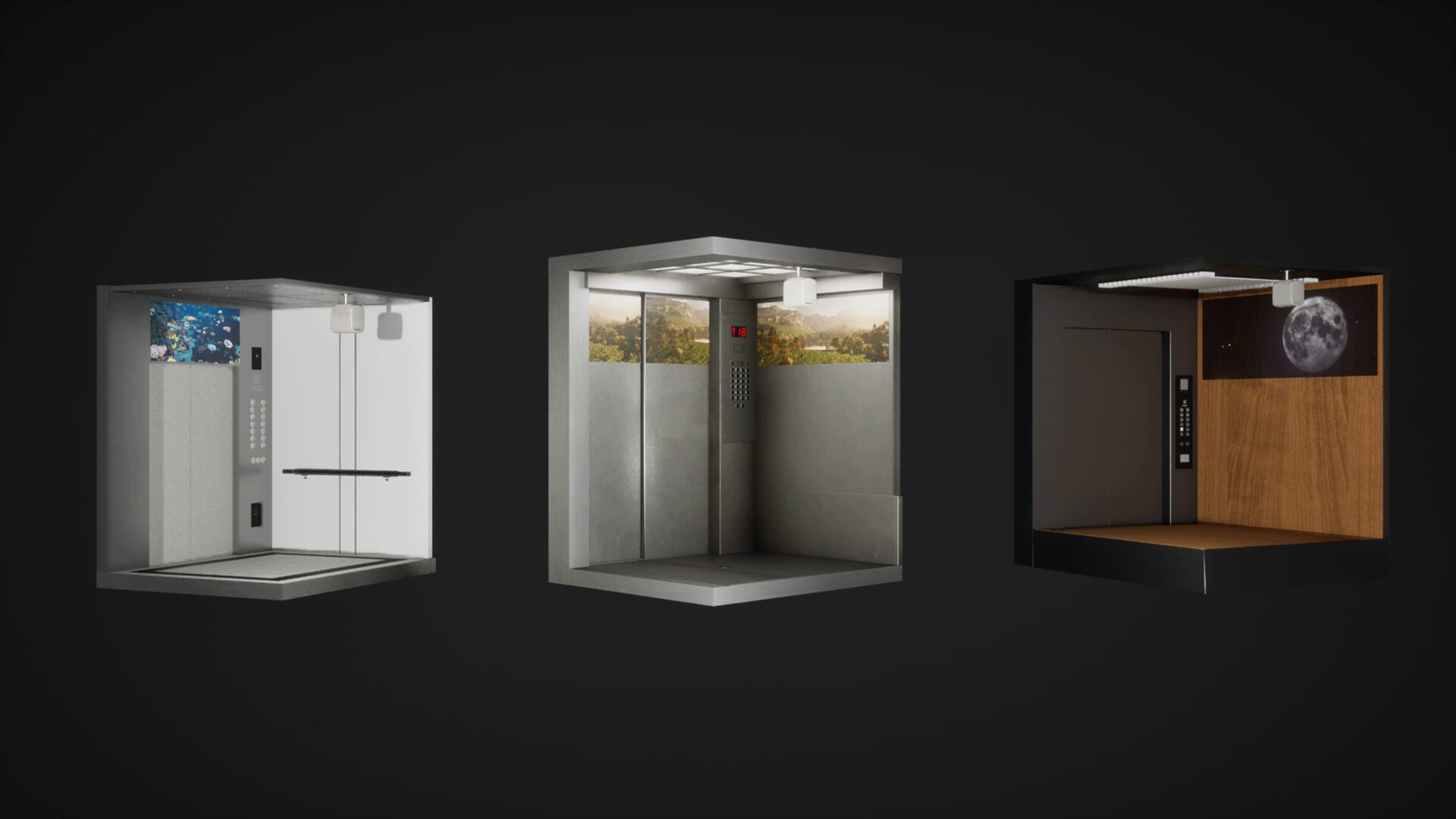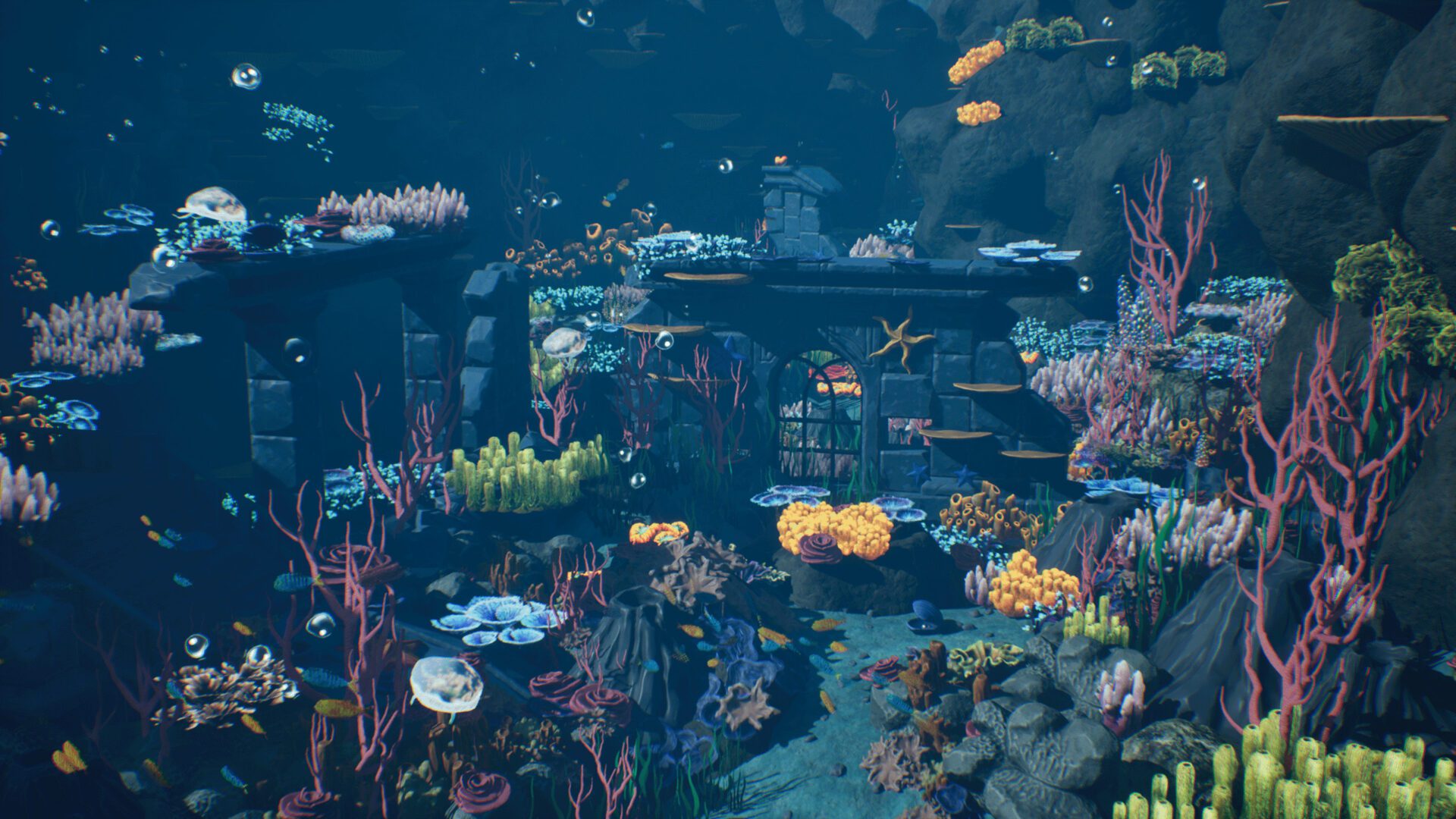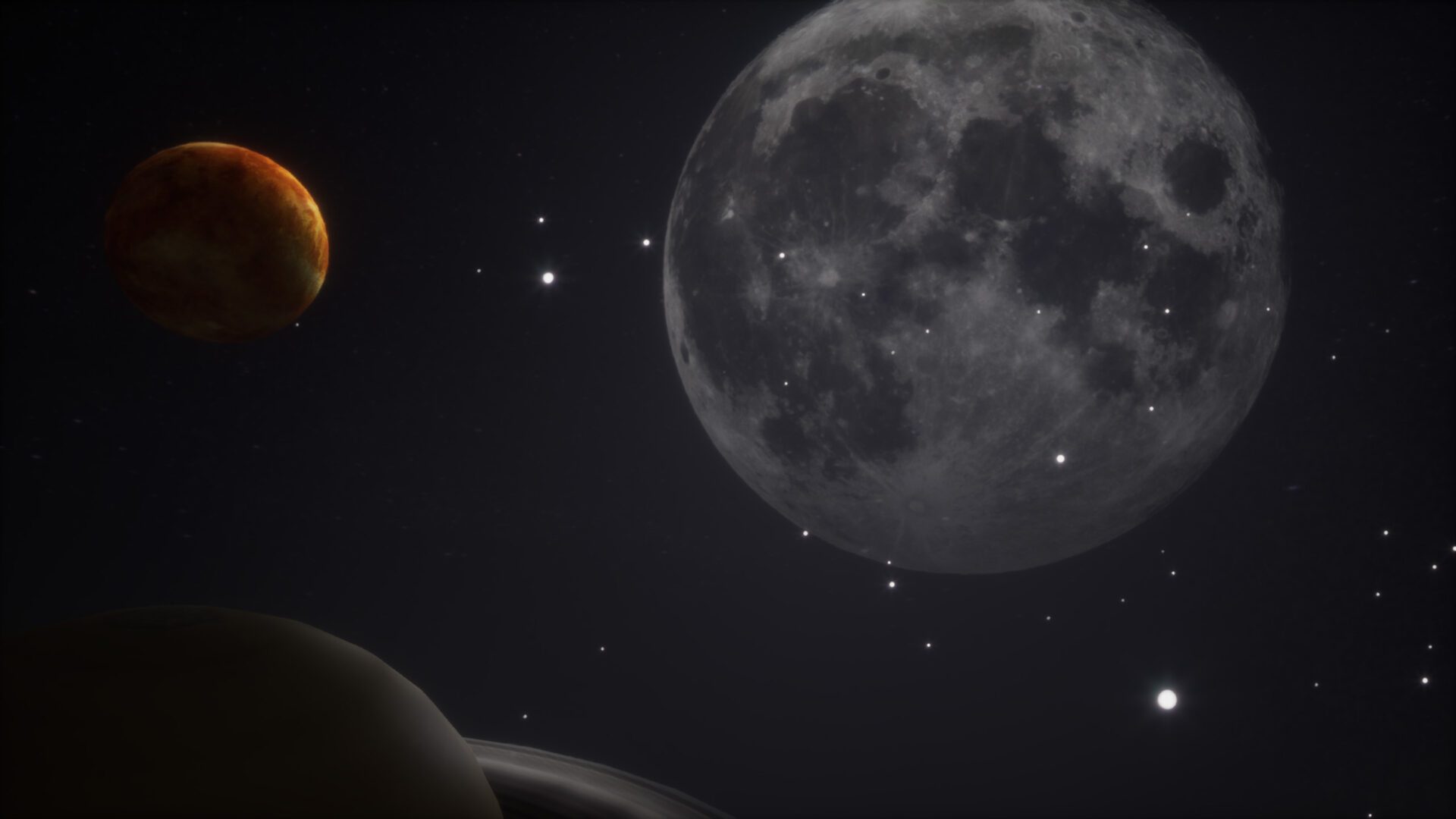Numa: Immersive Projection System for Confined Spaces
QIMU Design


Short description
Numa is a conceptual projection system that transforms elevator interiors into emotionally responsive environments for individuals experiencing claustrophobia or sensory distress. Rooted in psychological research and exposure therapy, Numa turns moments of anxiety into experiences of calm through immersive spatial design.
Why Elevators?
Elevators are emotionally overlooked despite being essential to urban life. For many, especially those with trauma histories or sensory sensitivity, elevators trigger intense discomfort. In a survey of 317 participants, 82 percent reported experiencing elevator-related anxiety. Symptoms include shortness of breath, racing heartbeat, dizziness, and feelings of being trapped. These responses reflect nervous system activation rather than simple unease. Numa addresses this gap by transforming the elevator environment into a therapeutic space that acknowledges psychological needs.
Designing for the Nervous System
Numa’s visuals are shaped by clinical insight and co-design with trauma-informed and neurodivergent communities. The system includes three immersive environments: Forest, Underwater, and Starscape. Each one is tuned to specific physiological and emotional needs.
Forest features soft canopy movement and natural light to offer comfort and rhythm. Underwater introduces fluid visuals with fish and gentle gradients to support deep breathing. Starscape presents a quiet, spacious environment ideal for those seeking mental distance and reduced sensory input.
These scenes are not decorative. They are carefully calibrated to guide breathing, support heart rate regulation, and promote emotional stability in moments of distress.
System Architecture and Modes of Operation
The Numa system includes a ceiling-mounted, high-brightness projector, lidar-based spatial scanning, and PET or Vikuiti films for visual clarity on metal walls. Internal alignment markers and adaptive image blending ensure the projection remains crisp and accurate in various cabin layouts.
Numa operates in two user-centered modes:
1. Daily Mode is activated by a button. It projects a calming scene on part of the wall or ceiling and accompanies routine elevator use without demanding attention.
2. Emergency Mode activates automatically during elevator malfunctions or prolonged stops. The projection expands across all cabin walls to create a full immersive environment. Optional sound adds another layer of grounding. The system includes an internal battery to remain functional during power outages, when emotional distress often peaks.
Emotional Design as Intervention
Unlike traditional exposure therapy, which often confronts users without consent, Numa is built around user control. Individuals can choose to activate the system, reinforcing their sense of agency within a confined space. This is key to breaking the feedback loop between perceived danger and rising panic.
Numa also supports gentle desensitization. By introducing short, low-intensity exposures to therapeutic visuals during daily routines, it builds emotional resilience over time. This aligns with research on gradual exposure and nervous system adaptation, offering a non-invasive design approach to mental wellness.
A Micro-Brand of Emotional Safety
Numa is more than a device. It is a micro-brand grounded in empathy, inclusion, and psychological care. It imagines a future where public infrastructure is not only functional but emotionally intelligent. It reframes the elevator not as a neutral container but as a responsive space of care. It communicates a clear design value: public systems should support people not only physically but also emotionally.
Implementation and Sustainability
Numa is engineered for retrofit in both existing and new elevators. The modular system allows for individual component repair and upgrade, minimizing replacement and reducing waste. Its projection-based visuals eliminate the need for decorative wall panels or printed signage, cutting material use and extending the product’s lifecycle.
Content can be updated digitally without altering physical components. The projector uses energy-efficient LEDs and is optimized for short distances, reducing environmental and operational costs.
This balance of therapeutic depth and technical feasibility makes Numa a sustainable alternative for future-ready infrastructure.
Broader Implications
Numa encourages city planners, designers, and developers to consider emotional safety as part of the built environment. It demonstrates that even the smallest shared spaces can offer therapeutic value without requiring wearables, apps, or active input.
It delivers support passively and quietly, meeting people where they are. By doing so, it introduces a new emotional vocabulary into the public realm.
Conclusion
Numa transforms 4 square meters of enclosure into space for restoration. Through adaptive visuals and trauma-informed design, it turns anxiety into presence and stillness. It bridges neuroscience and spatial design to reimagine the elevator as a place not just of transit, but of care.
Numa is not only a projection system. It is a call to rethink how we support psychological well-being in everyday life. It makes space for calm where it is most needed and most often overlooked.
Entry details
